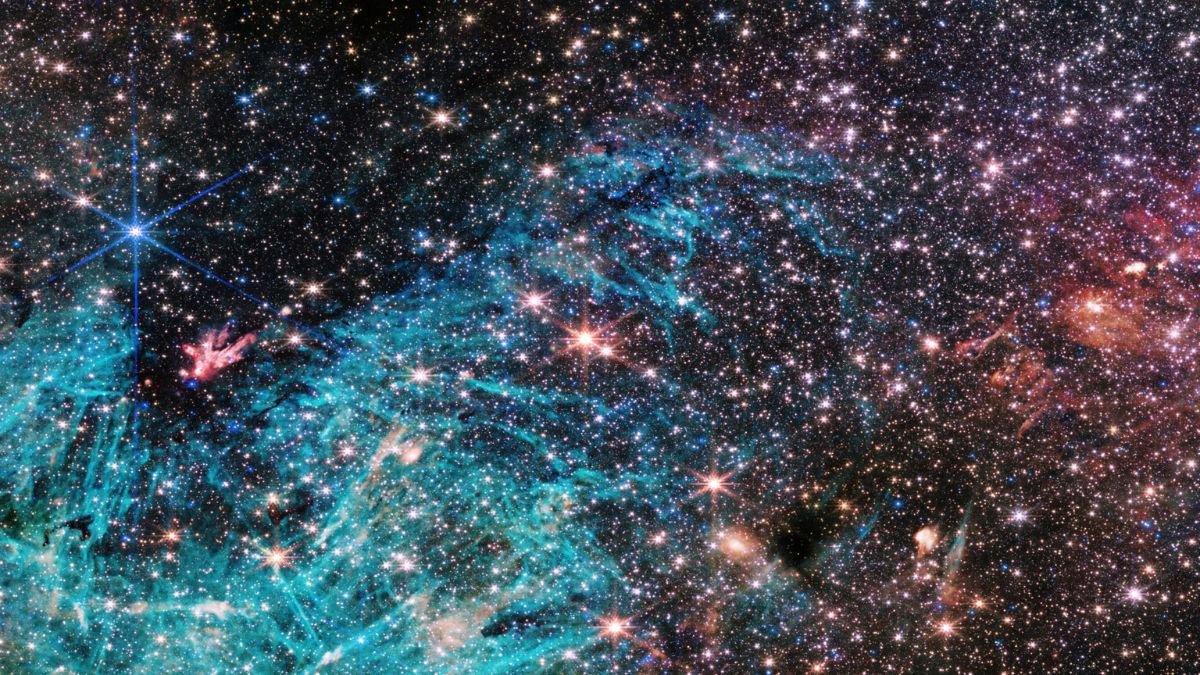The James Webb Space Telescope (JWST) has released a stunning image of the dense center of the Milky Way. Details of the heart of our galaxy revealed Thanks to its NIRCam (Near Infrared Camera) technology, it passes through gas and dust, producing unprecedented images of great scientific value.
Although it has never been seen before, it has not yet been explained by astronomers. The region is home to an area of space where stars are bornLocated 300 light-years away from the supermassive black hole at the center of the Milky Way, Sagittarius A* is known as Sagittarius C. Even exposed to radiation from intense stars, this busy maternity ward witnesses the birth of nearly 500,000 stars.
Explaining how stars are born in such a troubled environment due to the turbulent “last breaths” of dead stars remains a mystery. “There has never been any infrared data in this region at the level of resolution and sensitivity we got with Webb,” said Samuel Crowe, principal investigator of the monitoring team, from the University of Virginia (UVA) in Charlottesville, US.
How was the heart of the Milky Way revealed by James Webb?
The massive area shown in this new JWST image is about 50 light-years from end to end and lies about 25,000 light-years from Earth. According to NASA, “The galactic center is close enough to examine individual stars with the Webb telescope.”.
This includes insider information on how stars form in this particular region relative to others. The process, which may depend on the cosmic environment, could explain, for example, whether the most massive stars form at the center of the Milky Way or at the edges of its spiral arms.
The first stars of the Milky Way
A big finding in the latest image of the interior of the Milky Way, which is among 500 thousand stars, a protostar cluster still in the early stages of star formationthat is, it is gaining mass and “producing streams that glow like a bonfire in the middle of the dark infrared cloud,” according to NASA.
But it stands out in the middle of this fledgling star cluster A massive protostar more than 30 times the mass of our Sun. Other structures that should pay special attention to researchers are needle-like formations that point irregularly in various directions in ionized hydrogen, which has lost its characteristic electron due to the high energy conditions of its location.
Astronomers say the cloud of protostars is very dense: light from stars behind it cannot reach JWSTIt gives the illusion of a small amount of crowding, when in reality it is “one of the densest areas in the image,” according to the space agency’s statement.
Did you like the content? So, stay up to date on more discoveries from James Webb at TecMundo, and also take the opportunity to read about clues to the formation of the Earth billions of years ago detected by NASA’s super telescope.
Source: Tec Mundo
I’m Blaine Morgan, an experienced journalist and writer with over 8 years of experience in the tech industry. My expertise lies in writing about technology news and trends, covering everything from cutting-edge gadgets to emerging software developments. I’ve written for several leading publications including Gadget Onus where I am an author.












